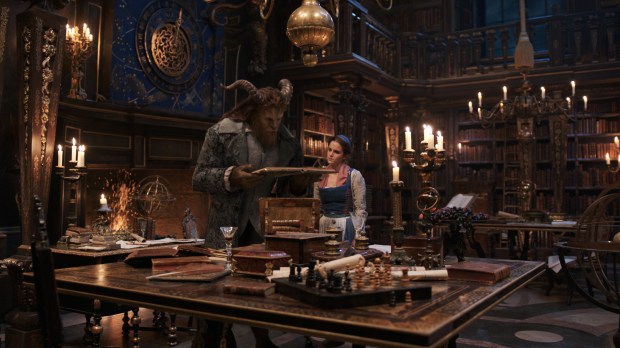Disney’s much hyped adaptation of Beauty and the Beast was released at the weekend. The film broke box office records with an estimated $170 million, making it the seventh largest opening weekend of all time. It’s a story that engages your emotions and keeps you hooked to the end. I was discussing the film with someone today who wanted to go and see it. She said it was her favourite fairytale and we were talking about what makes this particular story stand out. It occurred to me that part of the pull is the constant tension throughout the story, the conflict of interests, and the fact that the Beast is somehow flawed as a love match for Belle.
We all know the plot – an arrogant young prince and his servants fall under the spell of a enchantress, who turns him into the Beast until he learns to love and be loved in return. The headstrong village girl Belle enters the Beast’s castle after he imprisons her father Maurice. With the help of his servants, Belle begins to draw the cold-hearted Beast out of his isolation.
There is a tension between Gaston’s claims that he will marry Belle, and her desire for independence and dislike of his puffed up ego. Part of her appeal is the fact that she doesn’t want a relationship and is a strong and independent girl. She loves books, loves her father and, unlike the other girls in the village, refuses to fall for Gaston’s false charm. There is a tension between either Belle or her father being held prisoner in the tower.
There are obstacles in the way, in the form of wolves, Gaston, the villagers when they storm the castle, Belle’s need to rescue her father, and the Beast’s appearance and initial hostility. Every time you come up for air, another obstacle presents itself. Life can feel like this at times, but it is used as part of a plot to ramp up the tension and keep the viewer engaged and rooting for the main characters.
The fact that the Beast sees himself as unlovable and flawed because of the curse put on him, appeals to us because most of us feel flawed in some way, however big or small, aware of our less-than-perfect self. Yet, he wins her affection despite his appearance, which has kept him in his tower. It is in part because of this that we want their relationship to work.
I want to leave you with one of the highlights of the film…the library!


You must be logged in to post a comment.